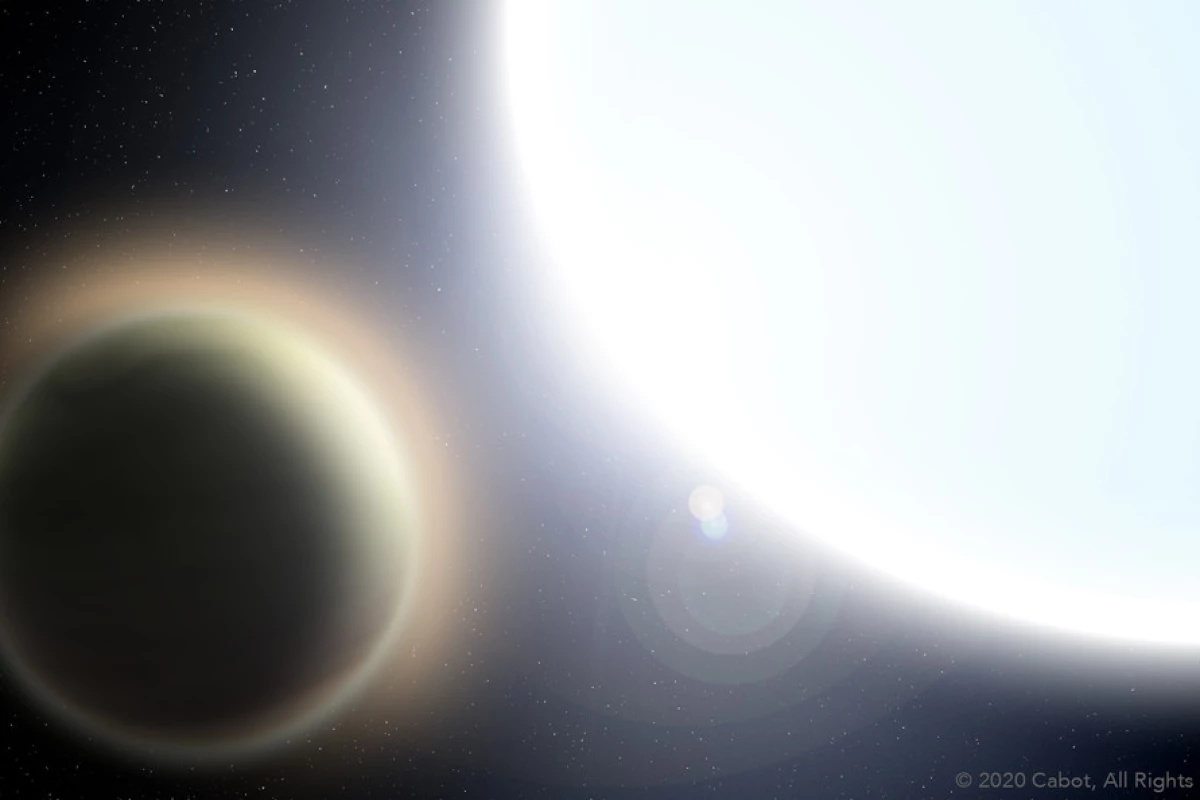An international team of researchers has found that an exoplanet 456 light-years from Earth is so hot its atmosphere contains vaporized metals. Orbiting the blue star KELT-20 every 3.5 days in the constellation of Cygnus, MASCARA-2 b is a "hot Jupiter" gas giant almost twice the size of Jupiter, yet is situated only 5 million miles (8 million km) from its parent star, giving it an atmospheric temperature of over 3,140 °F (1,727 °C).
Hot Jupiters are of great interest to space scientists because not only were unknown a quarter of a century ago, it wasn't even thought that such a planet could exist. At one time, the accepted view was that gas giants like Jupiter and Saturn would be confined to the outer, colder reaches of a planetary system, while small, rocky planets would dominate the warmer inner regions.
The discovery of exoplanets by programs like the Kepler mission have overturned many ideas about planetary systems and their formation. Hot Jupiters are one example – gas giants that sit so close to their parent star they aren't so much shone upon as roasted. However, they are also very useful to astronomers.
"Hot Jupiters provide the best laboratories for developing analysis techniques that will one day be used to search for biosignatures on potentially habitable worlds," says Debra Fischer, Yale's Eugene Higgins Professor of Astronomy.

Fischer's contribution to the team consisting of scientists from Yale, the Geneva Observatory, Bern University, the Technical University of Denmark was guiding the development of the Extreme PREcision Spectrometer (EXPRES), which was installed in the 4.3-meter (14-ft) Lowell Discovery Telescope near Flagstaff, Arizona. Its purpose is mainly to seek out exoplanets by measuring how an unseen planet's orbit affects the motions of its parent star, but it can also shed light on an exoplanet's atmosphere if it passes in front of its sun, absorbing starlight at specific wavelengths.
In the case of MASCARA-2 b, the spectrogram showed that the super-hot atmosphere contained gaseous iron, magnesium, and chromium in faint, but detectable quantities. The teams say that this sort of discovery may help in learning more about the composition of exoplanets, and also shed light on their atmospheric circulation patterns.
"The detection of vaporized metals in the atmosphere of MASCARA-2 b is one of the first exciting science results to emerge from EXPRES," says Fischer. "More results are on the way."
The findings will be published in Astronomy and Astrophysics.
Source: Yale University





